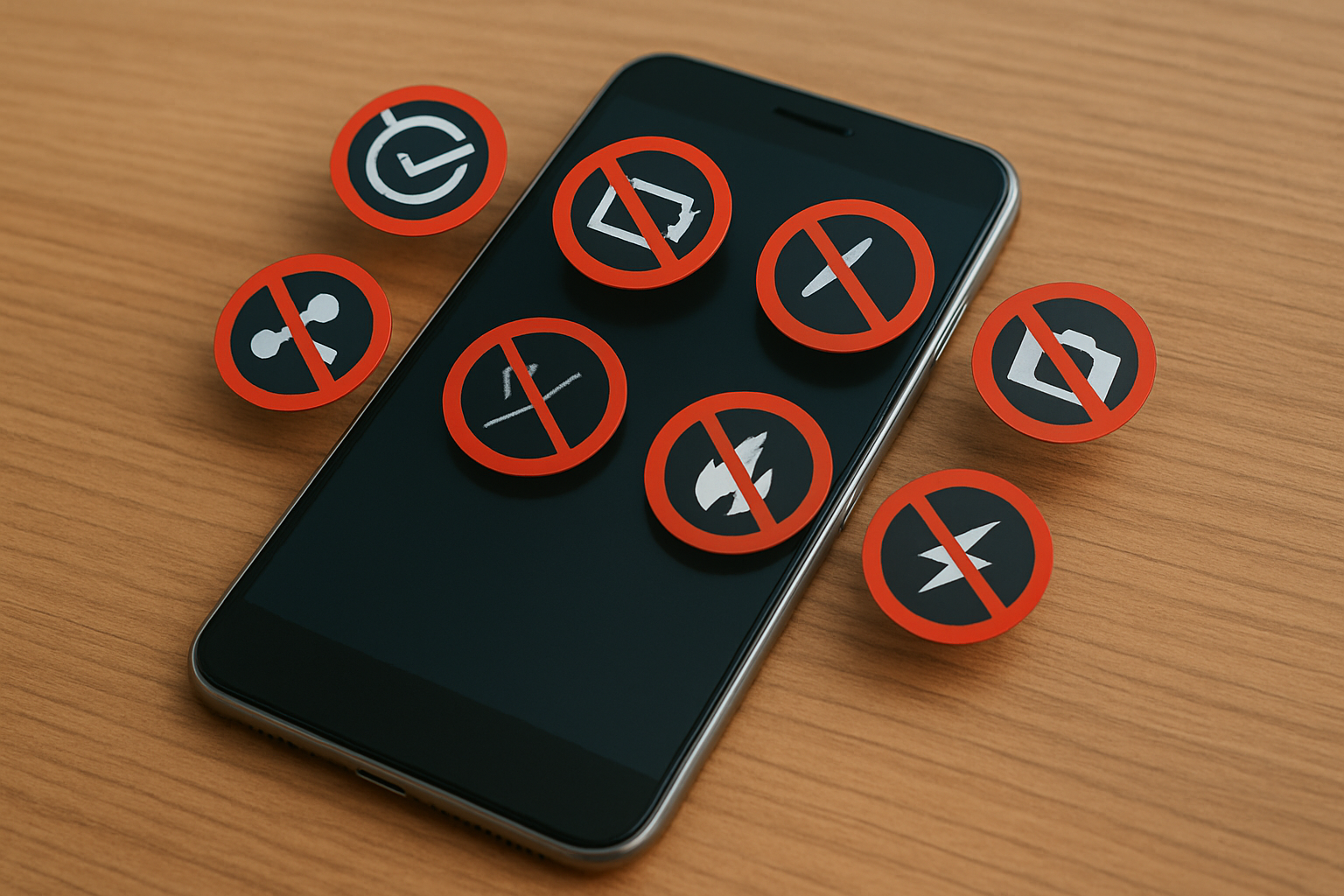Smartphones have become essential tools in our daily lives. From communication and productivity to entertainment and navigation, these devices handle a wide range of tasks. However, despite their advanced capabilities, many users unknowingly make common mistakes that can damage their phones, shorten battery life, compromise privacy, or reduce performance.
In this guide, we’ll uncover 7 frequent smartphone mistakes and show you how to avoid them—ensuring your device stays in top shape and serves you better for longer.
1. Ignoring Software Updates
One of the most common mistakes users make is delaying or ignoring software updates.
Why It’s a Problem:
- Updates often contain important security patches that protect your device from malware and vulnerabilities.
- They fix bugs and glitches, improving stability and performance.
- Updates can also bring new features or enhancements.
How to Avoid:
- Turn on automatic updates if available.
- Regularly check for system and app updates.
- Set updates to install during low-usage hours (e.g., overnight).
2. Letting the Battery Drain Completely
Many people still believe that draining the battery to 0% before recharging is good for the battery. However, modern lithium-ion batteries don’t work that way.
Why It’s a Problem:
- Deep discharges can reduce battery lifespan.
- Recharging from 0% to 100% frequently creates unnecessary stress on the battery.
How to Avoid:
- Keep your charge between 20% and 80% for optimal health.
- Don’t let your phone die often.
- Use battery saver modes when you’re running low.
3. Using Cheap or Uncertified Chargers
We’ve all seen ultra-cheap chargers sold online or at convenience stores, but they may not meet safety or performance standards.
Why It’s a Problem:
- Poor-quality chargers can overheat, damage the battery, or even pose fire hazards.
- They may not provide consistent power, leading to slow or unstable charging.
How to Avoid:
- Use the charger that came with your phone or buy certified accessories from reputable brands.
- Look for MFi certification (for Apple) or USB-IF certification (for USB devices).
4. Ignoring App Permissions
When installing new apps, many users click “allow” without reading what permissions are being requested.
Why It’s a Problem:
- Some apps request access to data they don’t need (e.g., your microphone, contacts, location).
- This can lead to privacy invasions or even data theft.
How to Avoid:
- Review app permissions regularly in your settings.
- Deny access to features the app doesn’t truly need.
- Avoid installing apps from unknown or suspicious developers.
5. Not Using a Screen Protector or Case
A smartphone’s screen is one of its most vulnerable components, and even a short drop can cause cracks or shattering.
Why It’s a Problem:
- Repairs can be expensive.
- Cosmetic damage reduces resale value.
- Even small cracks can affect touch sensitivity or let in dust/moisture.
How to Avoid:
- Use a tempered glass screen protector.
- Choose a shock-absorbent phone case that suits your lifestyle.
- Replace protectors when worn or damaged.
6. Leaving the Phone in Hot or Cold Environments
Extreme temperatures can damage your smartphone’s battery, processor, and screen.
Why It’s a Problem:
- Heat causes battery swelling and shortens life.
- Cold can freeze the battery or slow performance.
- Leaving your phone in direct sunlight (e.g., in a car) can overheat it quickly.
How to Avoid:
- Don’t leave your phone in your car or on a windowsill.
- Avoid heavy usage while charging in hot environments.
- Store your phone in a bag or shaded area during extreme weather.
7. Forgetting to Back Up Your Data
Many users only realize the importance of backups after they lose their phones or data.
Why It’s a Problem:
- Accidents, theft, or hardware failure can happen anytime.
- Without a backup, photos, contacts, notes, and messages could be gone forever.
How to Avoid:
- Set up automatic backups to the cloud (Google Drive, iCloud, OneDrive).
- Back up important files to your computer or an external hard drive.
- Use backup apps or services that run in the background.
Bonus Tips to Keep Your Smartphone in Top Shape
Here are a few extra pointers to keep your smartphone running like new:
Clear Cache and Unused Apps
- Regularly clean your app cache to free up space and improve performance.
- Uninstall apps you haven’t used in months.
Reboot Occasionally
- Restart your phone every few days to refresh the system and close background processes.
Avoid Overcharging
- Leaving your phone on the charger all night occasionally is fine, but doing it daily may degrade the battery.
- Use smart plugs or battery health features if your phone supports them.
Keep Your OS and Apps Organized
- Arrange apps in folders for easier access.
- Remove duplicate apps or unnecessary widgets from your home screen.
Conclusion: Be a Smart Smartphone User
Smartphones are incredible devices, but they need proper care and attention to function well over time. By avoiding these 7 common mistakes—like ignoring updates, using cheap accessories, and neglecting backups—you can extend your device’s lifespan, protect your data, and enjoy better performance.
Being proactive about how you use and maintain your phone doesn’t require much effort, but it makes a huge difference in the long run.








